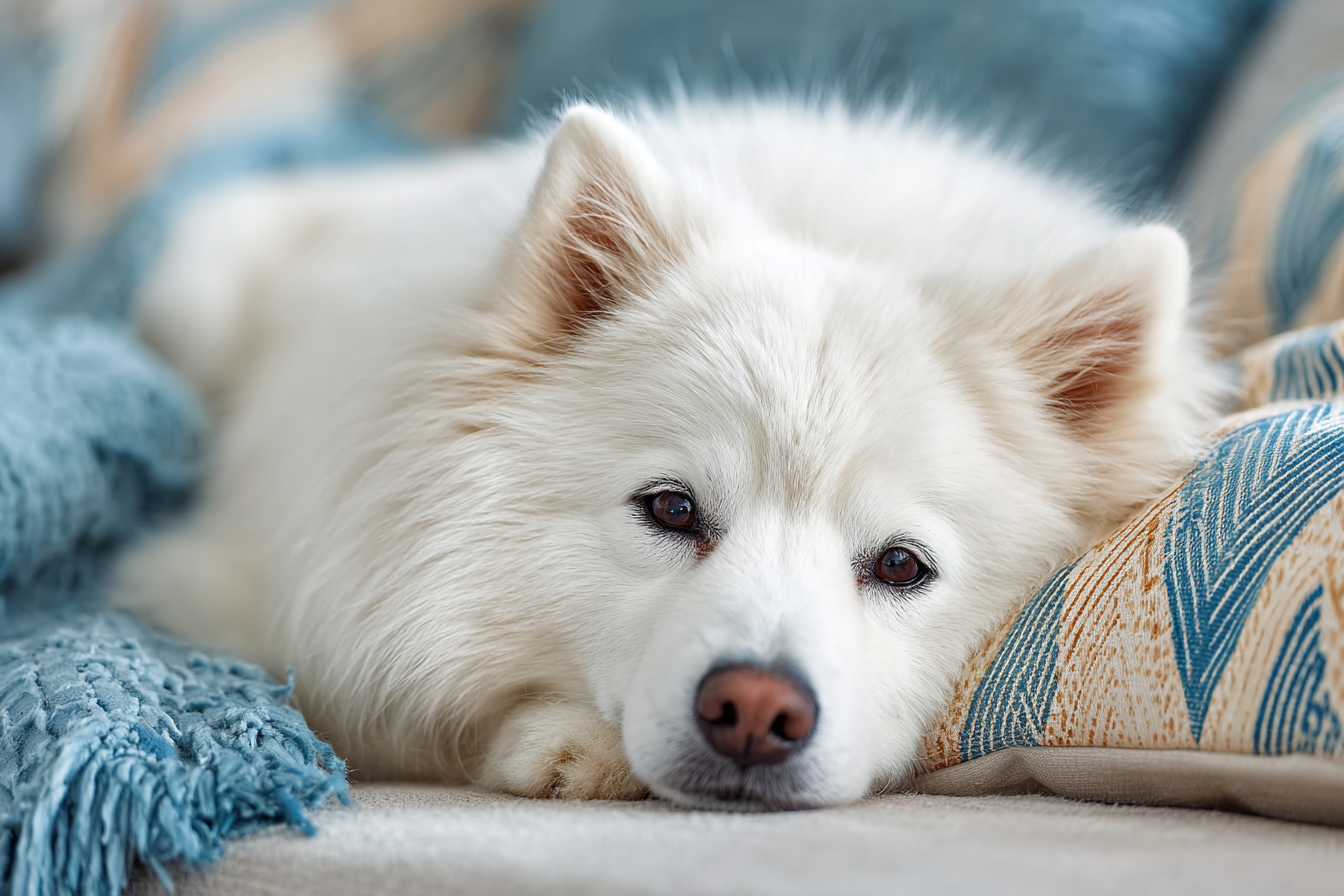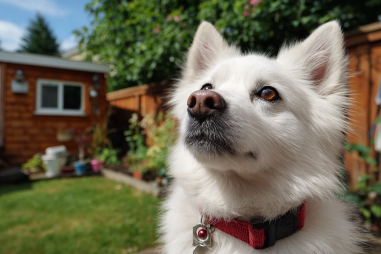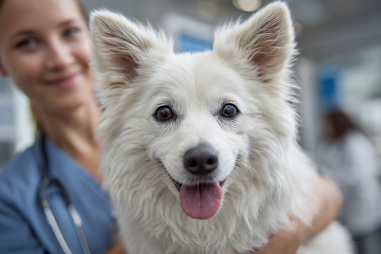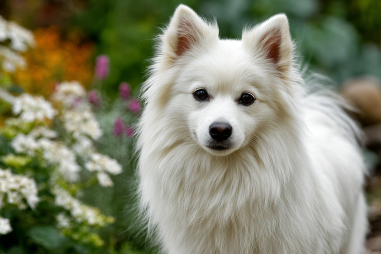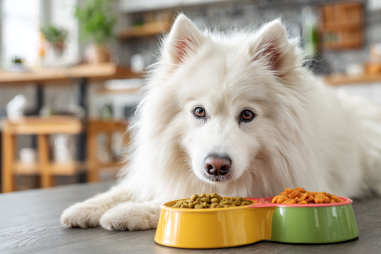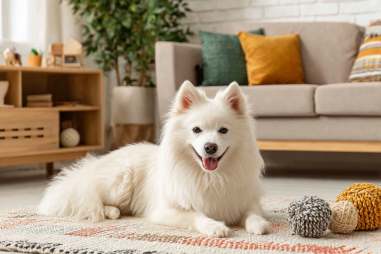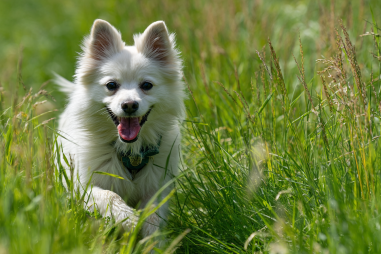American Eskimo Dogs, with their bright eyes and fluffy white coats, are beloved for their lively and affectionate nature. However, their strong attachment to their owners can sometimes lead to separation anxiety—a common behavioral issue where dogs become stressed and anxious when left alone. Understanding how to effectively train your American Eskimo Dog to manage separation anxiety not only improves their quality of life but also strengthens your bond. Let’s explore how you can help your furry friend feel more secure and calm when you’re not around.
Understanding Separation Anxiety Symptoms
Recognizing the signs of separation anxiety in your American Eskimo Dog is the first step toward providing relief. Symptoms can vary but typically include behaviors that indicate distress when you prepare to leave or actually depart. You might observe your dog pacing or whining, barking excessively, drooling, or even attempting to escape from their crate or room. Other signs include destructive behavior such as chewing furniture or scratching doors and windows. Some dogs may have accidents inside the house despite being housetrained, showing that their anxiety is impacting their normal routine. Understanding these symptoms will help you identify if your dog is struggling with separation anxiety or if their behavior is related to other factors.
Causes and Triggers in the Breed
American Eskimo Dogs are known for being highly social and people-oriented, which unfortunately makes them especially prone to separation anxiety. Their deep desire for companionship means that time alone can be distressing. Several factors can contribute to the development of separation anxiety in this breed:
- Early experiences: Puppies that have experienced early abandonment or inconsistent bonding may be more vulnerable.
- Change in routine: A sudden change, such as a move, a new family member, or changes in daily schedules, can unsettle your dog.
- Previous trauma: Rescue American Eskimos or those with a history of neglect might have stronger anxiety responses.
- Lack of adequate socialization: Dogs who have not been gradually trained to tolerate time apart from owners might struggle as adults.
Identifying the root cause can guide how you approach training and treatment.
Gradual Desensitization Techniques
One of the most effective methods for helping American Eskimo Dogs cope with separation anxiety is through gradual desensitization. This involves slowly accustoming your dog to the experience of being alone in a way that minimizes stress. Here’s how you can implement this:
- Start small: Begin by leaving your dog alone for just a few seconds or minutes, then gradually increase the duration over time. The key is to avoid causing panic or distress.
- Create departure routines: Avoid high-energy goodbyes or greetings, as these can heighten anxiety. Instead, keep your departures low-key and calm.
- Practice mock departures: Go through the motions of leaving—pick up your keys, put on your shoes—but don’t actually leave initially. This helps reduce triggers associated with your departure.
- Use cues and rewards: Reward your dog for staying calm during these sessions, reinforcing that being alone is not a negative event.
Consistency and patience are essential in desensitization training. Each dog progresses at their own pace, so respect their limits and never rush the process.
Creating a Safe Space for Your Dog
Providing a dedicated, comfortable area for your American Eskimo Dog can help them feel more secure when left alone. This “safe space” should be a place your dog associates with relaxation and safety. Consider the following tips when designing this space:
- Choose a quiet location: A spot away from noisy household activity or outside distractions often works best.
- Use a cozy bed or crate: Many dogs find comfort in having a crate or enclosed area that mimics a den.
- Include familiar items: Place their favorite blanket, toys, or even a piece of your clothing to provide comfort and familiar scents.
- Maintain moderate lighting and temperature: Keep the space well-ventilated and at a comfortable temperature to help your dog relax.
This safe space approach works best when combined with training, encouraging your dog to voluntarily go there and settle down.
Using Positive Reinforcement
Positive reinforcement is a powerful tool when training your American Eskimo Dog to manage separation anxiety. This method involves rewarding your dog for exhibiting calm, desirable behaviors, which encourages those behaviors to be repeated. Here are some suggestions on applying positive reinforcement in this context:
- Treat rewards: Provide tasty treats when your dog stays calm during practice sessions of being alone or in their safe space.
- Praise and affection: Use verbal praise, petting, or playtime as rewards for calm behavior, especially after short periods of separation.
- Reward independent play: Encourage your dog to play with toys independently to boost their confidence and reduce clinginess.
- Consistent timing: Deliver rewards immediately after the good behavior so your dog clearly associates the calmness with positive outcomes.
Over time, your American Eskimo Dog will learn that being alone doesn’t have to be stressful and can even be rewarding.
Tools and Toys to Ease Anxiety
Incorporating specific tools and toys can significantly help in reducing your dog’s anxiety. The key is to provide outlets for energy and mental stimulation, which can divert their focus away from worry when alone. Some useful aids include:
- Interactive toys and puzzles: These keep your dog busy and mentally engaged for longer periods, reducing boredom-driven anxiety.
- Calming aids: Adaptil diffusers or sprays release dog-appeasing pheromones that can help create a soothing environment.
- Chew toys: Giving safe chew toys offers comfort and distraction.
- Background noise: Leaving on soft music or a white noise machine can mask outside noises that might trigger anxiety.
- Comfort wraps or anxiety vests: These apply gentle pressure around the dog’s torso, often helping reduce stress.
Combining these tools with training often enhances your dog’s ability to cope independently.
When to Seek Professional Help
Despite your best efforts with training and environmental management, some cases of separation anxiety may require professional intervention. If your American Eskimo Dog’s anxiety is severe, persistent, or escalating despite your efforts, it’s important to consult a veterinarian or certified animal behaviorist. Professional help may involve:
- Behavioral assessment: Understanding the depth of anxiety and identifying any co-existing behavioral issues.
- Customized training plans: Tailored strategies by experts who specialize in canine anxiety.
- Medical treatment: In some cases, medication or supplements may be prescribed to ease symptoms and support behavioral training.
- Support with owners: Professionals can guide how you can manage your dog’s environment and responses more effectively.
Early intervention is often key to successfully managing separation anxiety, so don’t hesitate to seek help if needed.
Training your American Eskimo Dog to cope with separation anxiety involves patience, understanding, and consistent effort. By recognizing symptoms early, using gradual desensitization, creating a safe and comforting environment, and employing positive reinforcement, you’ll help your dog feel more confident and relaxed when alone. Remember to complement these approaches with appropriate toys and tools, and seek professional guidance if anxiety becomes overwhelming. With your dedicated support, your loyal companion can enjoy greater peace of mind and happiness, even during those times apart.

